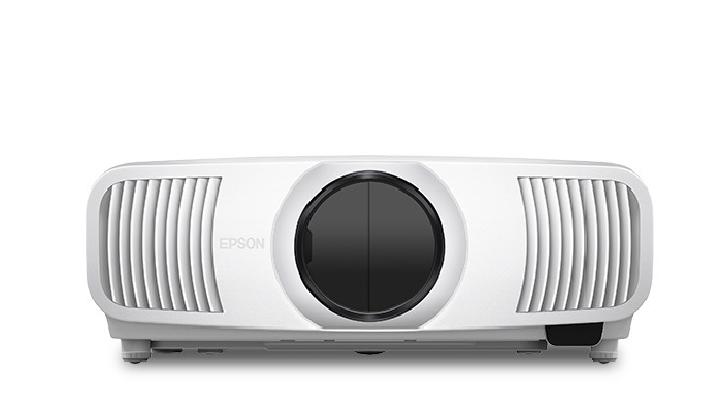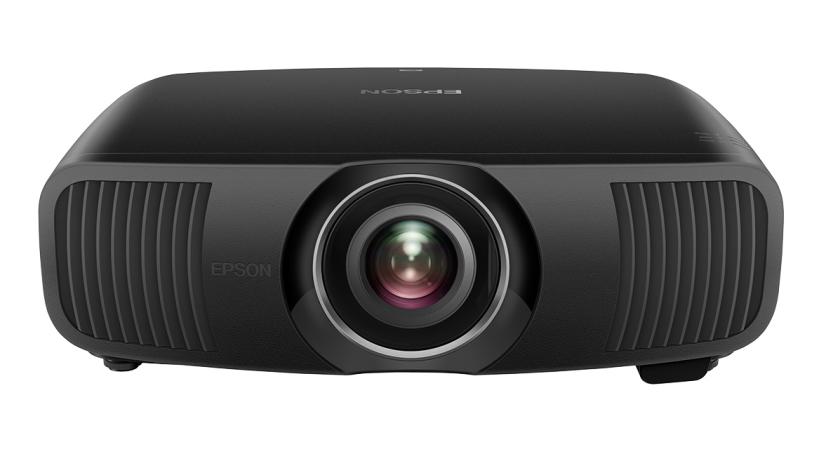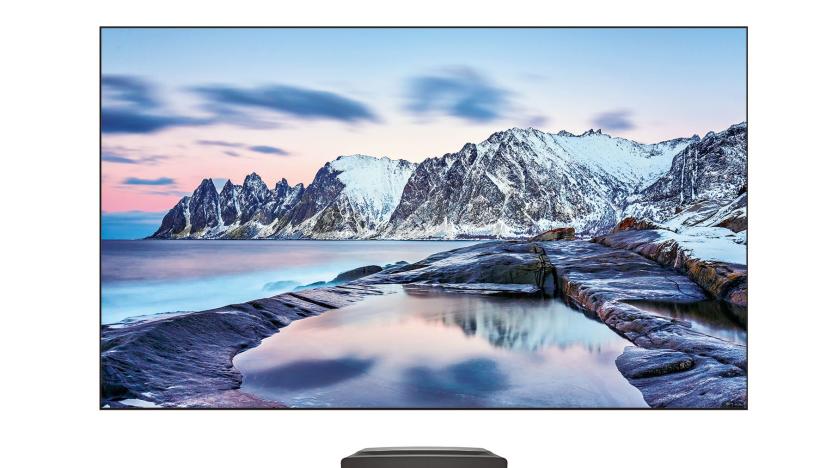laser projector
Latest

Epson's latest laser projector promises 4K 120Hz output for $3,999
The LS11000 has many of the same features as the more expensive Pro Cinema LS12000.

LG's latest CineBeam 4K projectors promise improved daytime viewing
LG has unveiled new CineBeam home projectors with improved brightness and contrast that can help with daytime viewing.

Epson's latest laser projector uses new pixel shift tech to output 4K at 120Hz
Epson has unveiled a new long-throw laser projector that delivers a claimed "zero compromise" 4K picture thanks to new pixel shifting technology.

LG's latest 4K CineBeam laser projector adjusts to your room light
LG just unveiled the CineBeam HU810P 4K laser projector that automatically adjusts to the light in your room.

Hisense's $4,000 laser projector comes with a 100-inch screen
When Hisense unveiled the L5-series ultra-short-throw projector at CES 2020, the $5,000 price seemed a bit expensive compared to the competition. However, the company has announced that it’s finally going on sale at a lower $4,000 price and it includes a 100-inch ambient light-rejecting (ALR) screen, to boot.

Hisense unveils a $5,000 short throw laser projector
TV manufacturer Hisense is jumping belatedly into the ultra short throw projector game at CES 2020 with its own model, along with a bunch of new inexpensive 4K TVs. The L5 4K projector uses a blue laser to deliver huge, sharp images "while avoiding unwanted light dispersion and offering a more natural viewing experience," the company wrote.

Lenovo's projector phone beams a touchscreen onto any surface
Smartphones with built-in projectors -- well, just the two from Samsung, really -- haven't exactly been a huge hit so far, but Lenovo thinks it's finally got the right use case for this combination: beaming a touchscreen or virtual keyboard onto your desk. Announced at the Lenovo Tech World conference today is the Smart Cast, the world's first smartphone with an integrated focus-free laser projector, as opposed to the DLP tech on existing pico projectors. In addition to the usual wall projection mode, there's a "surface mode" that requires twisting the projector cap at the top (to enable reflection), propping up the phone with its kickstand, and then you'll have a projected touchscreen -- be it a virtual piano, a virtual keyboard or even Fruit Ninja -- right in front of you. Alas, that's all the info we've got so far. Until we get to see the real thing, you can check out the demo video after the break to stay entertained.

Panasonic's 7.5mm-thick, 100-lumen laser projector module claims world's thinnest title
While scanning through Panasonic's booth at CEATEC 2012, we couldn't help but notice a prototype of its world's slimmest 100-lumen laser projector module (or OIU aka optical imaging unit, as the company prefers), which can beam out an 800 x 480 picture. It's not clear when exactly we'll see this 7.5mm-thick device getting into consumers' hands, but there's certainly room for improvement for the image quality. Likewise, the scan-type OIU (resolution at about 400 x 300) next to the slim projector is far from ready for mass consumption, as the company is hoping to actually shrink it down and integrate it into mobile phones. That said, the fact that this technology doesn't require focusing makes it worth the wait -- the light doesn't go through an LCD filter like ordinary projectors do, and instead, it's a single laser beam scanning out the picture, hence the name. Also shown along side were the optical bay drive pico projector that's already being offered by Fujitsu, as well as the PJ-SJ25U 854 × 480 DLP pico projector which was released in August this year. While the latter's image quality was rather impressive even under the strong ambient lighting, we struggle to appreciate the ¥56,800 or $730 price tag. Anyhow, pricing is just a matter time, as always. Update: The thickness of the slim laser OIU was originally mistyped as "75mm." This has now been corrected. Many apologies.

Acer breeds LEDs with lasers, new hybrid projector is born
Acer usually graces our pages for its pico projector range, but the company's taken a leaf out of the high-end book for its latest non-portable model, the K750 LED-laser hybrid. The world's first combo projector spits out 1080p, just as you would expect, at a contrast ratio of up to 100,000:1. Acer claims the color brightness, saturation and fidelity are significantly better than mercury lamps, and appears to be leaning towards the business and education markets, citing the K750's instant on / off capability to sway the productive types. If you fancy one of these in your house, however, better start saving your cash -- AVForums claims it'll be available in the UK later this month bearing a price tag of around £1,700 (approximately $2,650).

Sony, Sumitomo push laser projectors forward with a new, more powerful green laser diode
As cool as lasers are, so far there are precious few commercially available display devices available that use them. That may change with this new green semiconductor laser diode announced by Sony and Sumitomo, capable of the brightness necessary to replace the more expensive light sources used to fill in the middle of the RGB setup. According to the two companies, it's the world's first one capable of over 100mW power at 530nm, which they think will make it a fit for both advanced projectors and compact light projectors. Check after the break for more details on how the technology came to be -- drawing heavily on Sumitomo's production techniques and Sony's GaN laser technology developed with Blu-ray -- we'll let you know when there's a LaserVue or REDray setup priced for general consumption.

REDray 4K cinema laser projector and player eyes-on (video)
There's no better way to control the visual experience from shoot to show than to create the camera and the projector. That's likely the thinking behind the REDray, the 4K laser cinema projector making an appearance at the company's NAB booth today. The device supports 2D and passive 3D (up to 120fps in 3D mode), with 4K projection for each eye and has a rated laser life of over 25,000 hours. While the device itself is likely to be hidden behind glass in an elevated projector room, the REDray has the same industrial look and feel of its Scarlet and Epic capturing counterparts, with a solid matte metal construction, heavy duty bolts and dedicated access panels for the lens filter, the laser phase adjustment oscillator and the angular refraction aberration indexer. There's also a T1.8 50mm lens mounted up front, sufficiently completing the beautifully monstrous package. Also on display was the tablet-controlled REDray Player, which includes four HDMI 1.4 video outputs with 7.1-channel audio output, the ability to move 4K video to the internal hard drive and an SD reader for ingesting content. You'll also find dual gigabit Ethernet ports, along with USB and eSATA connectors. The projector experience is much less about the hardware than it is the projections themselves, which certainly did a justice here -- especially considering the imaging device's mid-development status. During a screening of the 3D short Loom, which was shot with the RED Epic, images looked fantastic with accurate color and excellent dynamic range, allowing us to see every detail in a contrasty dark scene, where we were able to make out a very dimly lit female actress. The projection was incredibly sharp on the 24-inch foot screen, despite the film being displayed with 2K for each eye, rather than the maximum 4K. There will be two versions of the REDray projector, including a home theater flavor that supports screens up to 15 feet in size that'll ring in at under $10,000, and a professional model with support for larger venues. RED CEO Jim Jannard confirmed that the home-bound version will ship sometime this year, though he was unable to provide a more precise ship date. We weren't permitted to record video during the screening -- which is for the best, considering that there's really no way to do this thing justice -- but you can still flip through the gallery below for an early look at REDray.

Sun Innovations show off Transplay Animated Laser Display, projects blueish vision of the future (video)
As we continued to explore deeper and deeper into the underbelly of CES, something sparkled in the corner of our jaded eyes as we flitted between rows and rows of anonymous stalls. Already festooned with engineering awards, this animated laser display works by beaming a laser generated image onto glass planes containing a film of nanoparticles. Although a blue projector was on show here, it's also being developed in red, white and even dual blue and red. The projector itself requires only a short distance to project across the full width of the screen -- the demo kit you see here was under three feet from the image, which was pin sharp. They're not really about the implementation here, more the hardware, which accepts VGA input through either the USB connection or the built-in XD card reader. Regardless, the current demo reel includes some retail display animations and rotating logos -- including a glimpse of the Zune logo -- but the system can also be turned into an augmented reality driving aid. Marvel at it yourself by checking out our eyes-on right after the break. Zach Honig contributed to this post.

Seeser laser pico projector is always in focus, powered by Android
We've seen our fair share of pico projectors, so takes a bit to actually get us excited about one, but the Seeser from ESPlus is showing a lot of potential. Inside the tiny black box is a laser-based projection system which, unlike traditional lamps, doesn't need to be focused and can output a 25-lumen, 800 x 600 image up to 100-inches in size. There's an SD card slot around the side, which appears to be of the micro variety and it has an integrated 1seg tuner for pulling in broadcasts. All of this is powered by a 1GHz processor running Froyo -- so there's no actual need to hook up an external content source. Sadly it doesn't appear that it boasts access to the Android Market though, without a touchscreen, you wouldn't be able to make good use of the apps anyway. The Seeser should be available in Korea soon, but there's no word yet on how much it'll cost.

RED CEO teases 4K 3D laser projector, bound for theaters and (millionaires') homes
We all love RED -- the company puts out some of the best pro-quality digital video cameras on the market. But, what about the other side of that equation? All of that 4K footage is worthless without something to watch it on. CEO Jim Jannard, notorious for his ability to build hype and mystery, took to the REDUser Forums to tease some details about an upcoming 4K, 3D laser projection system that will be targeted at both homes (presumably well off ones) and theaters. Details about the projector are still scarce, but we do know it won't be using TI's 4K DLP chip, and that it will rely on passive 3D tech rather than active, which Jannard said "landed in the La Brea Tar Pits." The image is apparently so bright and clear that it left Stephen Pizzo, co-founder Element Technica, "speechless." We just have one question: when can we expect our review unit?

Nioncom's pico projector-equipped mini-tablet gets demoed on video
So, Nioncom still hasn't gotten its MemoryKick Vision out the door yet (the company has pushed availability in the the second half of 2011), but the pico projector-equipped "mini-tablet" is still alive... even if it's not so well. The folks at Picopros got their hands on a prototype unit from the company, though, what they manhandled wasn't exactly the Vision. Instead, they fooled around with reference design that sported a smaller screen (3.5-inches versus 4.3) and 4GB of flash storage in place of the 500GB hard drive -- otherwise the two are identical from a hardware perspective. So, while this is certainly a step in the right direction from the renders, you'll forgive us for not remaining a tad skeptical about about its supposed, upcoming release. Check out the slew of videos after the break, and hit up the source link for the complete impressions.

Apple patents hybrid laser projection technology for use in laptops, iPhones, TVs
Every time I write about an Apple patent, I make a point to remind my readers that Apple files patents for a lot of things that never see the light of day in products. With that in mind, Apple has filed one of its coolest patents yet. It's for a hybrid laser projection technology that could be used in any number of devices ranging from laptops to iPhones, even TVs. Apple describes the hybrid laser projection technology as cheaper than traditional projectors with the added advantage of eliminating the grains and specs seen on current projection technologies. With (admittedly far-fetched) rumors of Apple getting into the TV business later this year, wouldn't it be interesting if we saw one without a traditional display? Knowing Apple, I wouldn't put it past the company. Apple always seems to present us with future science fiction-like technology before most people think such a technology is a viable possibility. photo by ben.chaney | flickr cc [via Engadget]

Apple patent application reveals more projector possibilities, including a projector-equipped laptop
We've already seen a few patent applications that suggest Apple is at least mulling over the idea of using projectors for one purpose or another, and another newly published one has now offered a bit more fodder for speculation. Described as a "display system having coherent and incoherent light sources," the patent application suggests that the projector would be laser-based, and be both cheaper and more power efficient than conventional light projectors, while also overcoming the so-called "speckle" problem sometimes seen with laser projectors. What's perhaps most interesting, however, is that the patent application also suggests the projector could be integrated into other devices -- in fact, one of the claims specifically mentions a laptop with an integrated projector, as artfully illustrated above.

Nioncom announces Android-based, pico projector-equipped MemoryKick Vision
MicroVision may not have any plans to turn the pico projector-equipped "mini-tablet" prototype it showed off at CES earlier this month into an actual product, but it looks like little-known Nioncom is now taking the idea and running with it. While it's still a bit too render-y for our tastes, the company insists that its MemoryKick Vision device is real, and that it will hit the US market sometime in the second quarter of the year. It's based around the same PicoP projector used in MicroVision's prototype, but it beefs things up with a larger 4.3-inch capacitive touchscreen and, perhaps most notably, a 2.5-inch hard drive that promises to allow for 500GB to 1TB of storage (it also pushes the device's thickness to a full inch). Otherwise, you can expect to get Android 2.2 for an OS, a 5 megapixel camera, WiFi and Bluetooth, an accelerometer, HDMI in and out, a USB port, and an SD card slot for additional storage. Still no firm word on a price, but the company apparently expects it to be in the "mid-$500 range." %Gallery-114996%

AAXA debuts L1 v2: world's smallest 20 lumen pico projector
The pico projector may have peaked a year or so ago, but AAXA Technologies is hoping to ride the coattails of success with the laser-based (read: focus-free) L1 v2. Predictably, this is the second generation L1, and it's being hailed as the world's smallest 20 lumen pico projector at 4.2- x 2.1- x 1.2-inches. Other specs include a native 800 x 600 resolution, on-board gamma correction, an inbuilt media player capable of decoding a slew of file formats, an LCoS imager, a USB socket and an internal battery good for 1.5 hours of use. We're told that it can blast images up to 50-inches in size, and while the $449 MSRP still stings, those who pre-order now can get in for $399. Not exactly a Black Friday special, but hey...

Microvision integrates direct green laser into pico projector prototype, completes RGB achievement
You should by now be aware that we're big fans of Microvision's Show WX pico projectors. Whether integrated into the smartphones or gaming peripherals of the future, we feel like the company's Laser Display Engine has a big part to play in our lives. It's therefore very welcome news to hear that its research team has managed to integrate a "direct" green laser into the portable projector setup, making for simpler and cheaper manufacturing of smaller components. Up to this point, Microvision has been performing its color mixing using a red laser, a blue laser, and a red laser specially re-calibrated to output green light, but that added bit of complexity can now be set aside with the inclusion of lasers that produce green hues natively. The company cites at least five global manufacturers ready to produce direct green beamers in commercial quantities by late 2011, so with a bit of luck and price competition, the pico projector dream might have itself a glorious realization after all.











